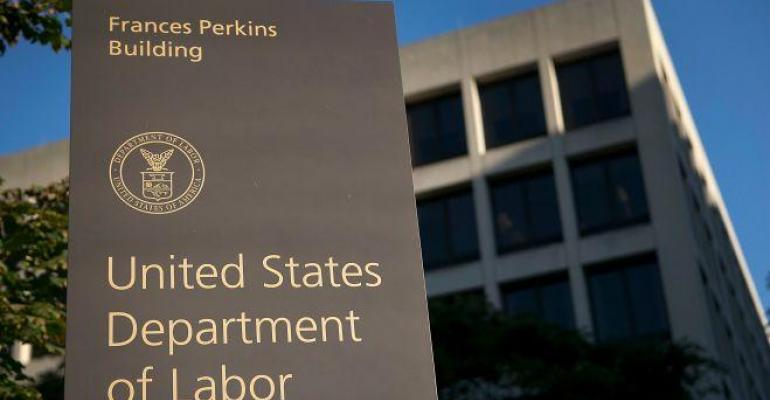Investors could be losing 10 to 15 percent of their potential retirement savings because of conflicted advice from brokers, according to a memo written by White House economic advisors that could galvanize presidential support for new rules governing advisors of ERISA accounts.
In a memo first obtained by The Hill, the Council of Economic Advisers’ chairman Jason Furman and CEA member Betsey Stevenson briefed senior staffers on the issue, saying advisor abuses and conflicts of interest could cost investors up to $17 billion a year.
“An investor receiving conflicted advice who expects to retire in 30 years loses at least 10 to 15 percent of his potential retirement savings due to conflicts, or approximately 1 to 3 years’ worth of withdrawals during retirement,” according to the memo on the Department of Labor’s proposed draft “Conflicts of Interest for Retirement Savings” rule.
But the Securities Industry and Financial Markets Association, the industry group representing securities firms, banks and asset managers, is questioning how the White House economists came up with those calculations.
For years, investor advocate groups have argued that commissions earned by brokers—who are not legally obligated to act as fiduciaries—incentivize transations that hurt consumers. That would include such things as advising clients to roll 401(k)s into IRA accounts, which could include higher fees and lower returns, and excessive trading in retirement savings accounts.
The Jan. 13 memo estimates that the most clear-cut examples of these conflicts result in $6 to $8 billion annnually in losses for investors; a broader view of the practices suggest investors are losing up to $17 billion per year. The memo did not provide further details on the differences between the two types of conflicts.
But SIFMA disputed the estimates, saying that they have not been used before by the administration and they were unsure how they were calculated. “We have not seen evidence of harm to the investors—they haven’t been able to show it and we’re not sure where they’re getting this,” says Lisa J. Bleier, managing director for public policy and advocacy for SIFMA.
Kevin Carroll, managing director and associate general counsel at SIFMA, said he believes the issue of regulating advisor conflicts should be left in the hands of the industry's current regulators, pointing out that both the SEC and FINRA have made IRA rollovers an exam priority in 2015. "To the extent that the core, primary regulators are stepping up and increasing resources and focus on this important area, maybe that’s a reason why the DOL could recognize those efforts and let them proceed before taking any action," he says.
“It’s concerning when you read something like that,” said Cheryl Crispen, SIFMA's head of communications. "We will continue to advocate for a uniform fiduciary standard and on the DOL side, quite frankly, we’re going to continue to work with the bipartisan support on the Hill, the administration and others, to point out our concerns with the proposal, which would limit access to choice."
The Financial Services Institute declined to comment Friday. The Financial Services Roundtable did not immediately respond to a request for comment.
The Department of Labor took up the fiduciary issue in 2010, proposing a rule that would require advisors overseeing retirement plans to act under a fiduciary standard, putting client interests ahead of all other considerations when making investment recommendations on accounts covered under the Employee Retirement Income Security Act.
The rule has been delayed multiple times. It was expected to be released in August according to the agency’s regulatory agenda, but has now been pushed back to the first quarter of 2015.
While no one is certain what the new rule will look like, it’s expected to expand the definition of a fiduciary to anyone who provides advice to retirement plans, including individual retirement accounts and 401(k)s.
In the past, the DOL’s biggest proponent of the regulation, Phyllis Borzi, assistant secretary for the Employee Benefits Security Administration at the DOL, said the agency will include some exemptions to accommodate different business practices.
“We have to be able to make a finding that allowing certain kinds of transactions and forms of compensation that would otherwise be prohibited because they have the potential for being conflicted for being self-dealing, we have to be able to make a finding that they’re in the best interest of participants and beneficiaries,” said Borzi, during an Investment Management Consultants Association conference in April 2013.
She did not elaborate on what exemptions might be included. As for whether IRA rollovers will be covered under the DOL’s rule, “You’ll just have to wait until the movie comes out on this one,” she said at the time.
Many investor advocates want to speed up the rule’s release. Last week, the Consumer Federation of America and Americans for Financial Reform joined together with the nation's largest employment unions and the AARP to mount a public campaign supporting the rule.
The group launched a website, SaveOurRetirement.com on Jan. 14 to educate investors on the issue and “mobilize” public support.
“The website is part of an effort to mobilize the public in support of the rule,” said Barbara Roper, the CFA's director of investor protection. “To do that, we have to start by educating them that there is a rule proposal to support and a real problem that the rule is intended to solve.” The coalition will lobby lawmakers to support the proposed change.
Other organizations behind the campaign include the American Federation of State, County, and Municipal Employees (AFSCME), American Federation of Labor-Congress of Industrial Organizations (AFL-CIO), Better Markets, and the Pension Rights Center.
In addition to the website, the coalition has a petition on Change.org has about 34 supporters as of press time on Jan. 23. Once it gets to 100, the group will send the letter to President Barack Obama, the DOL and Congress. “We’ll keep it open as long as it takes,” said Roper.






